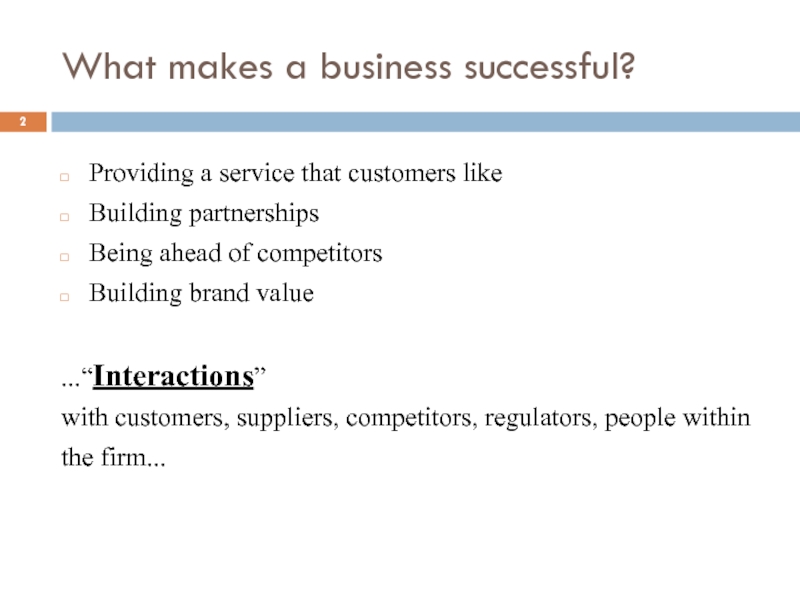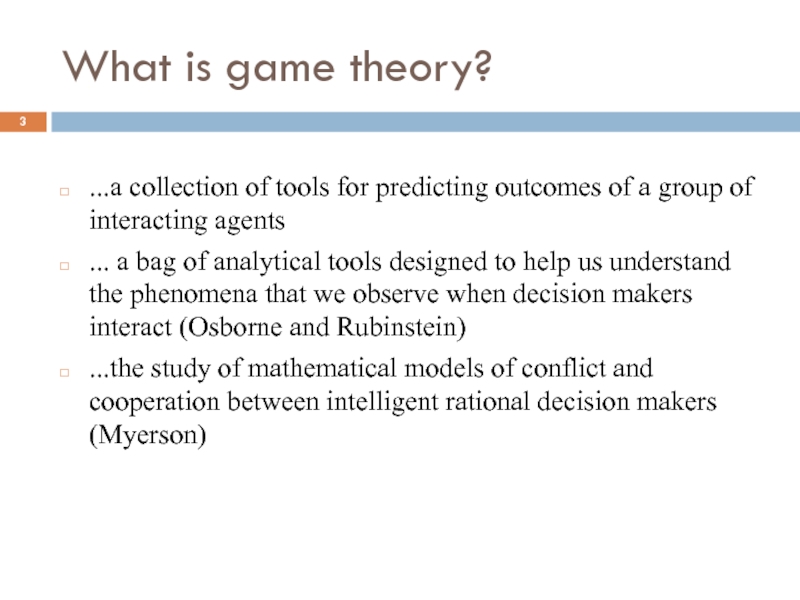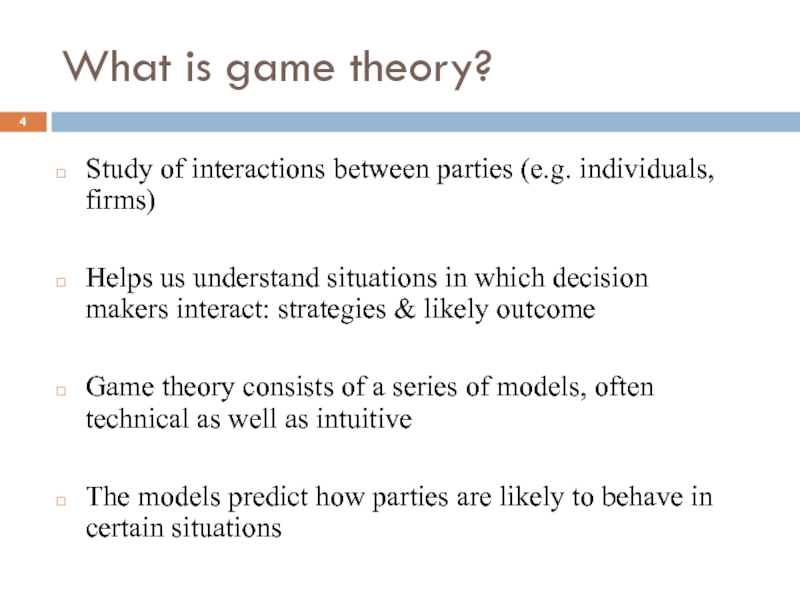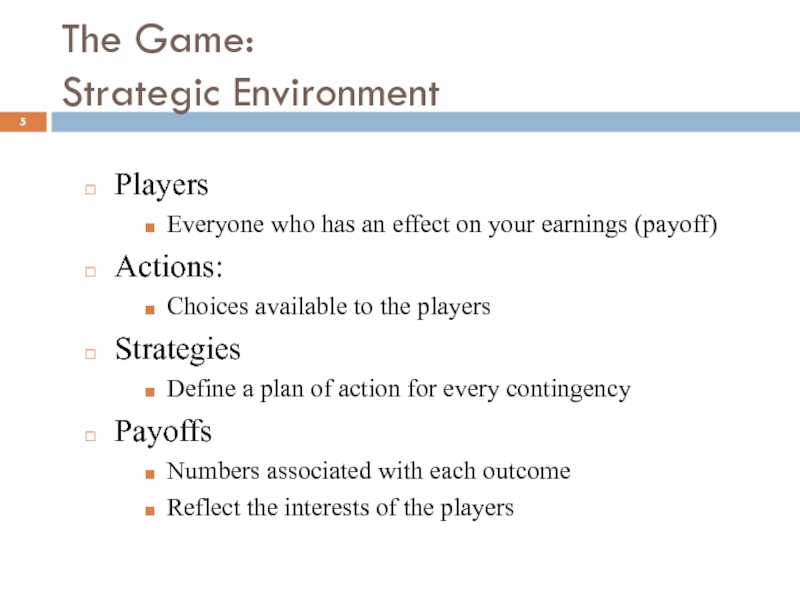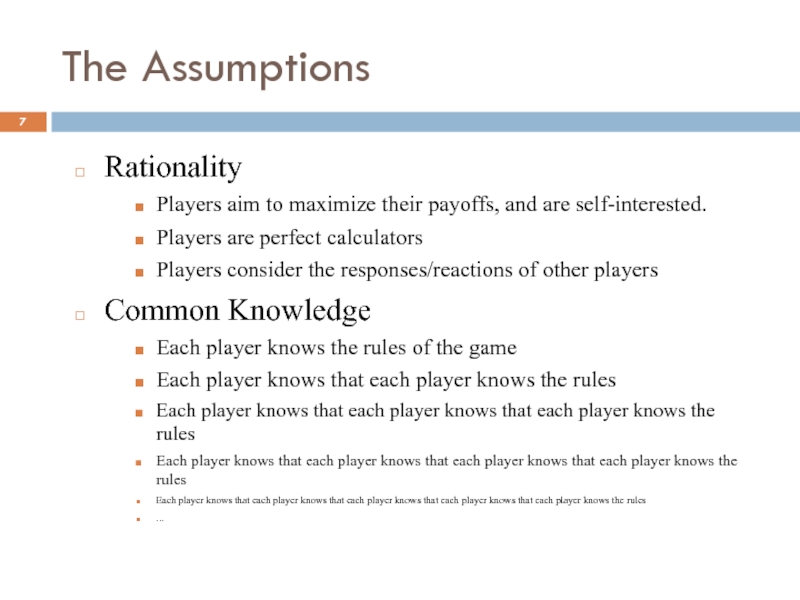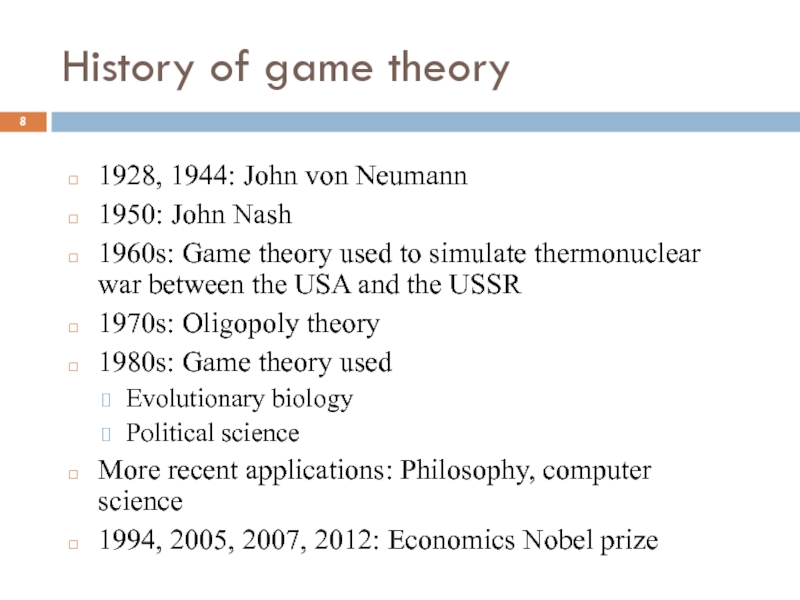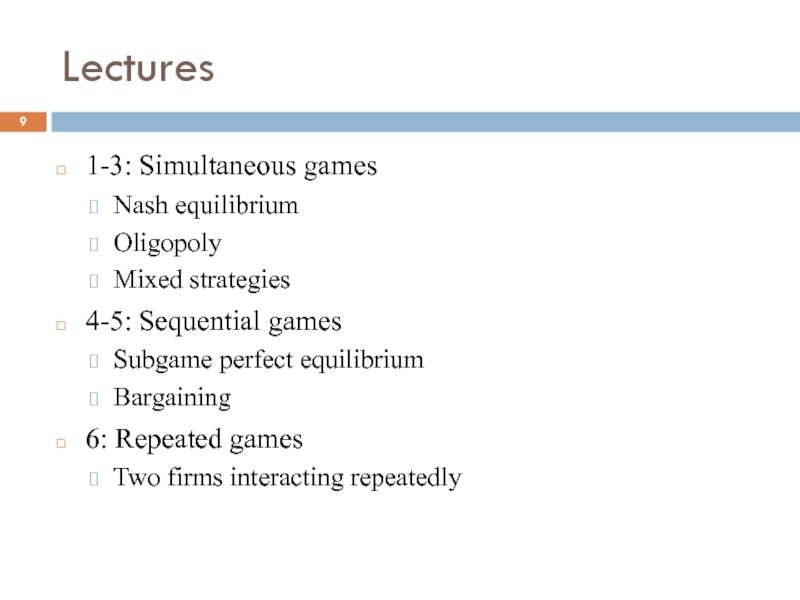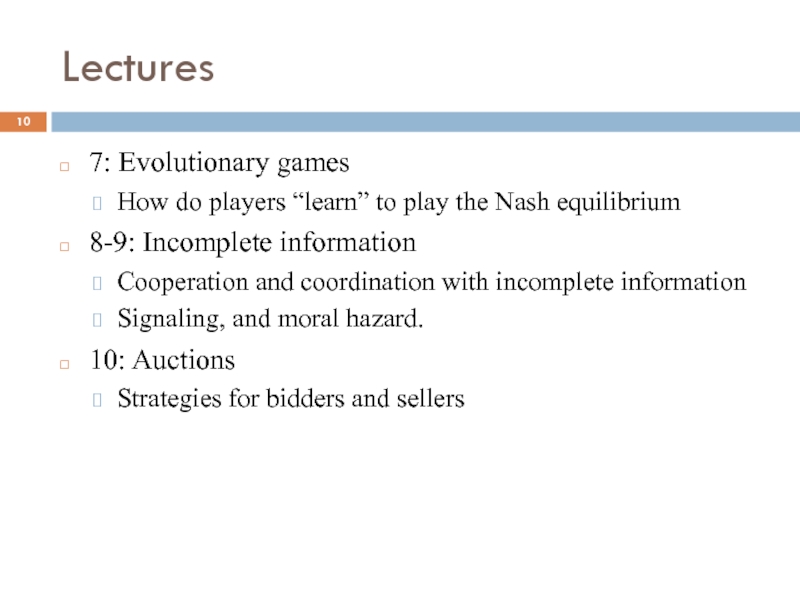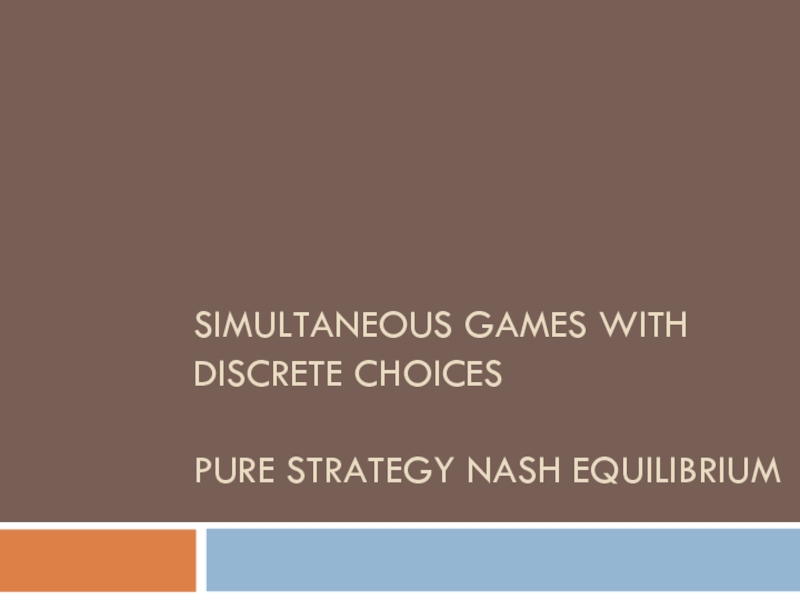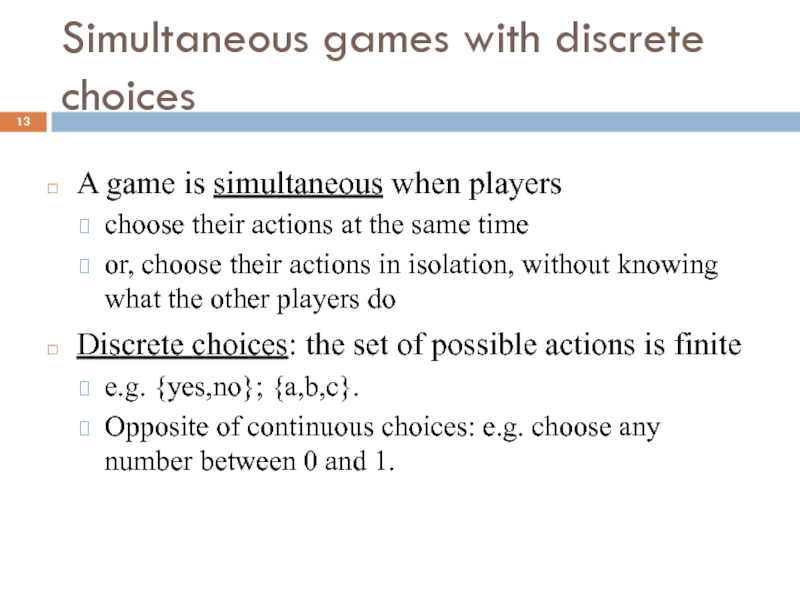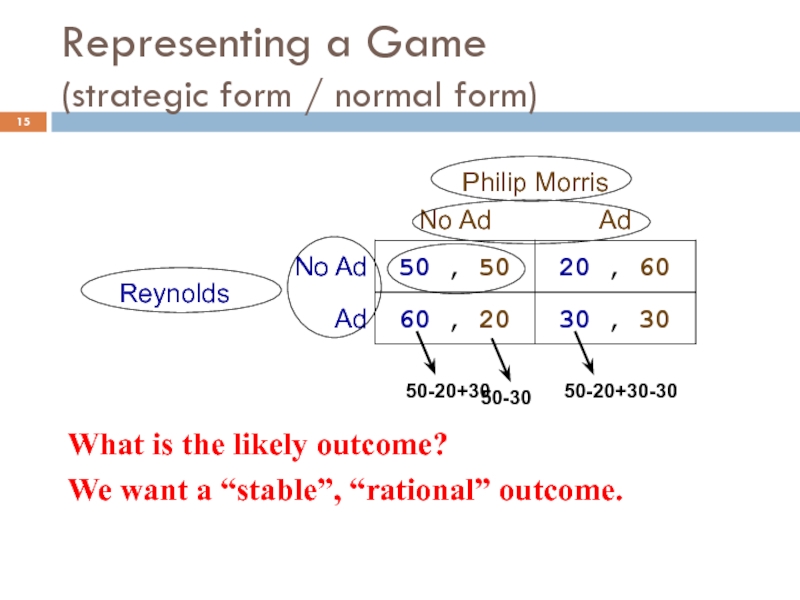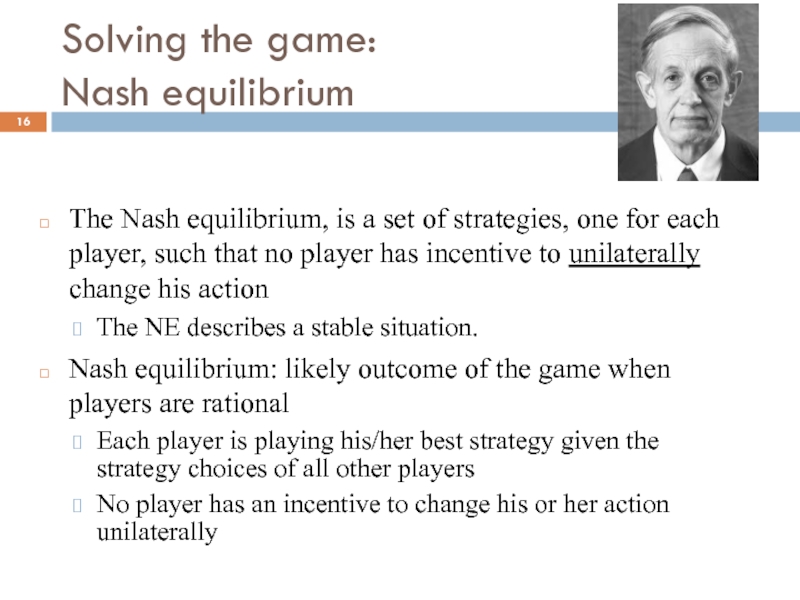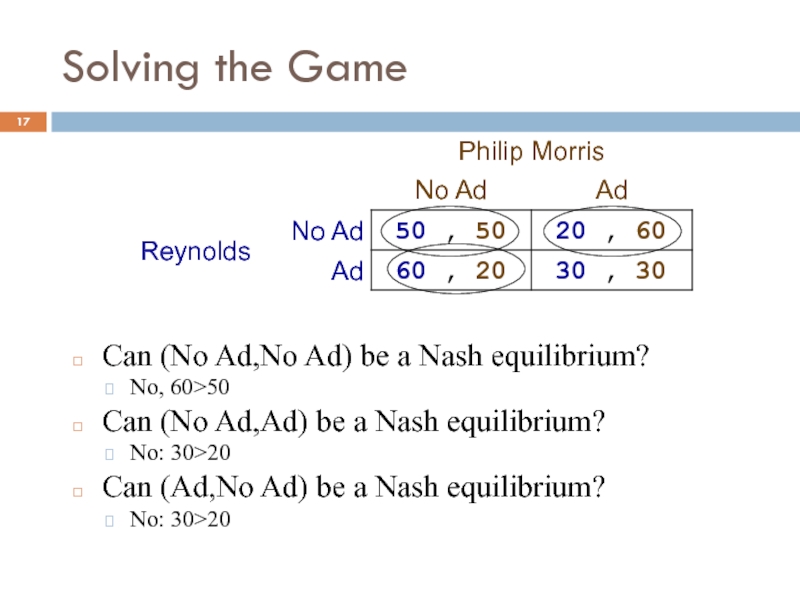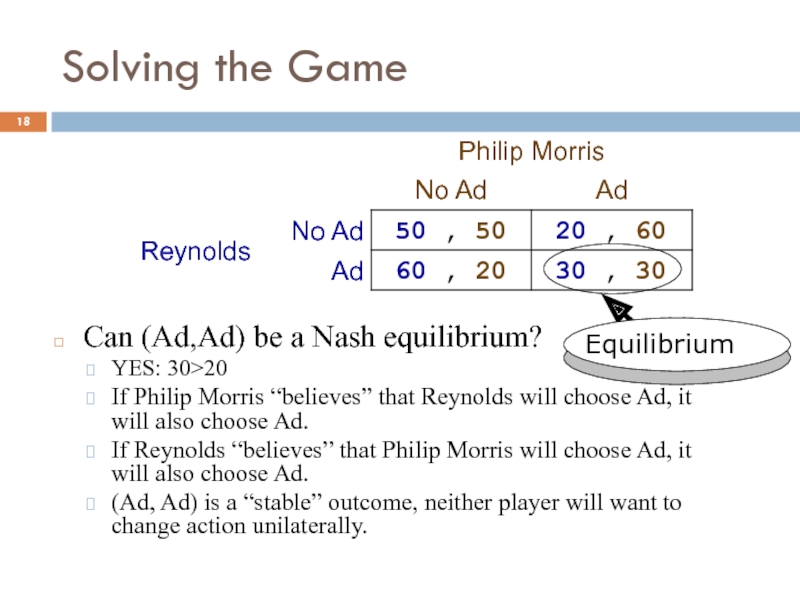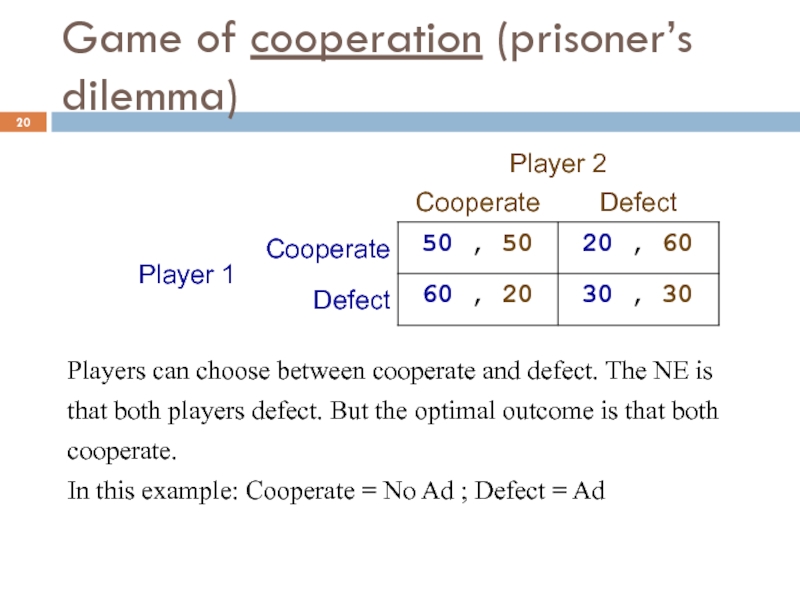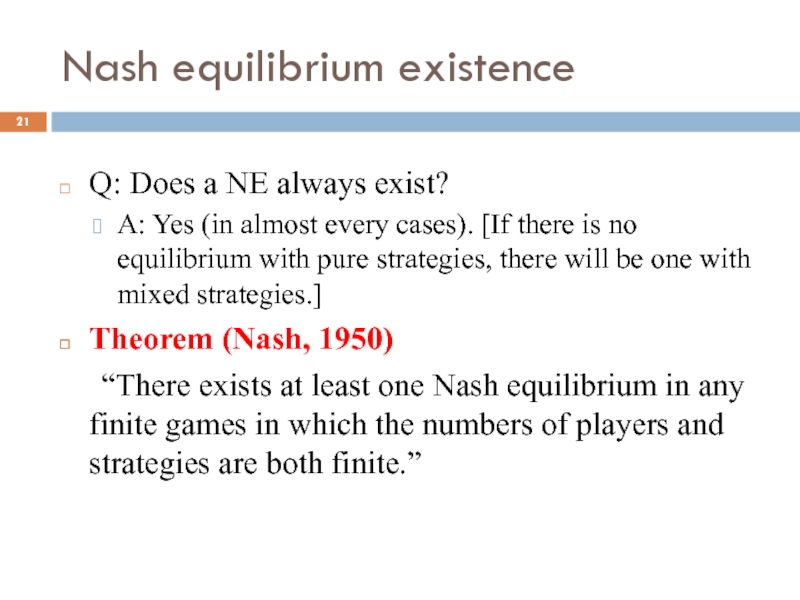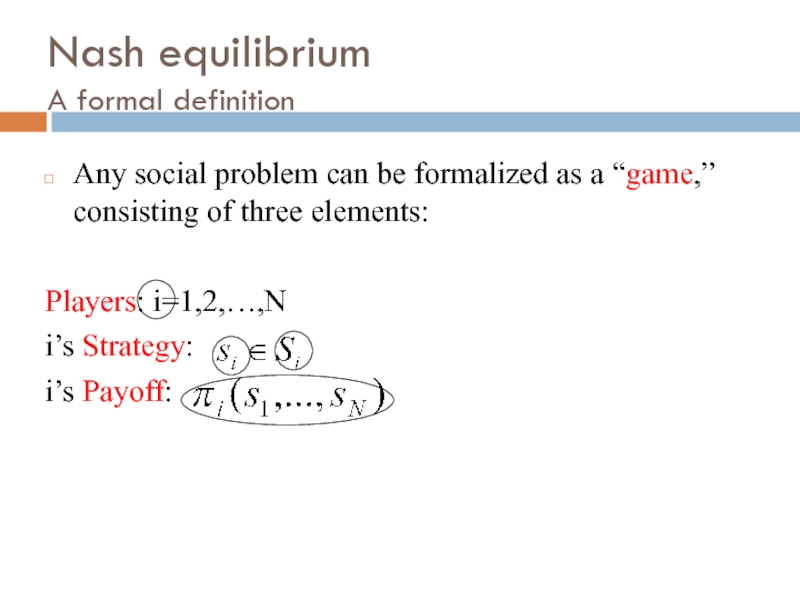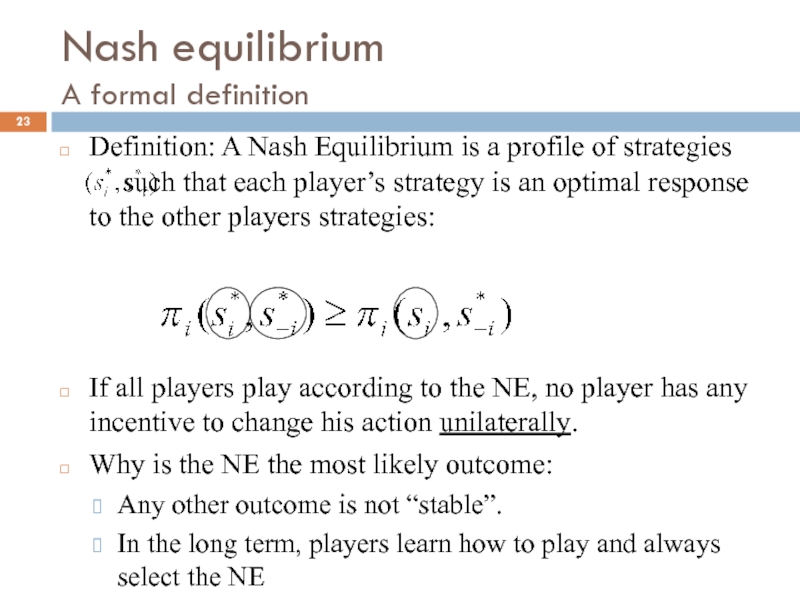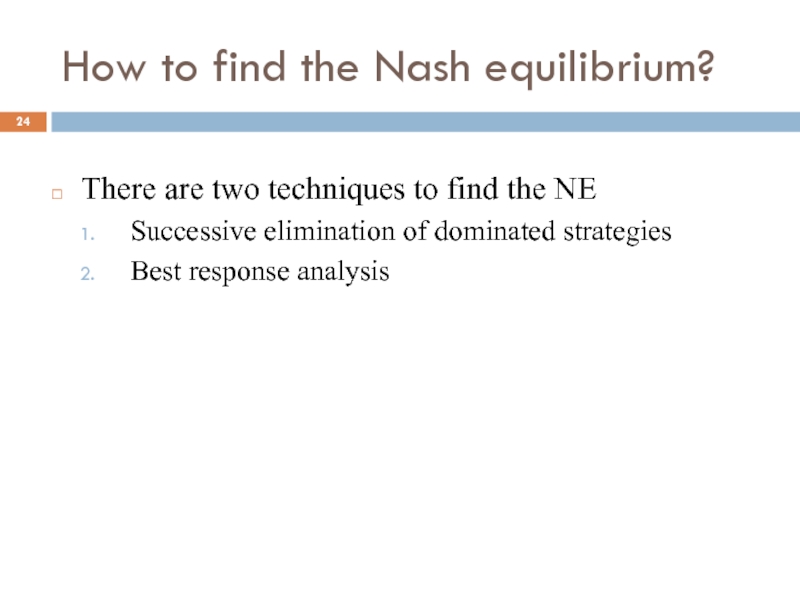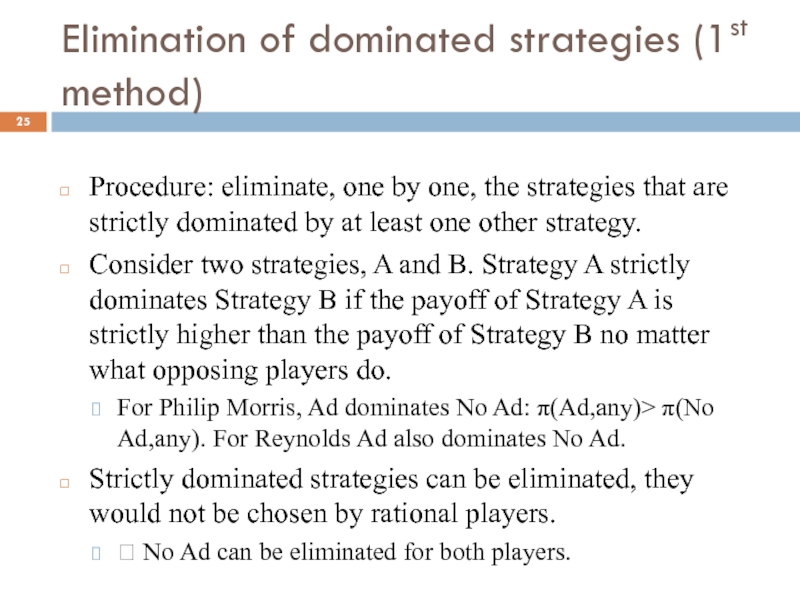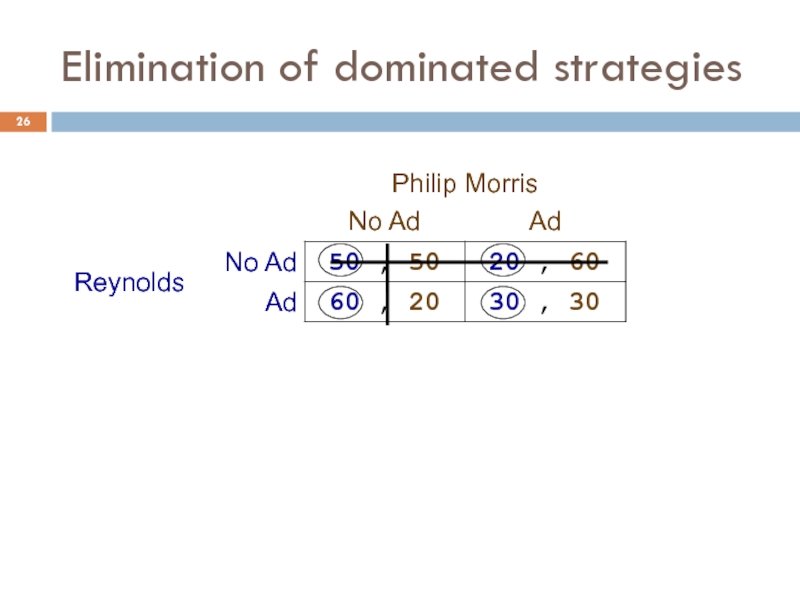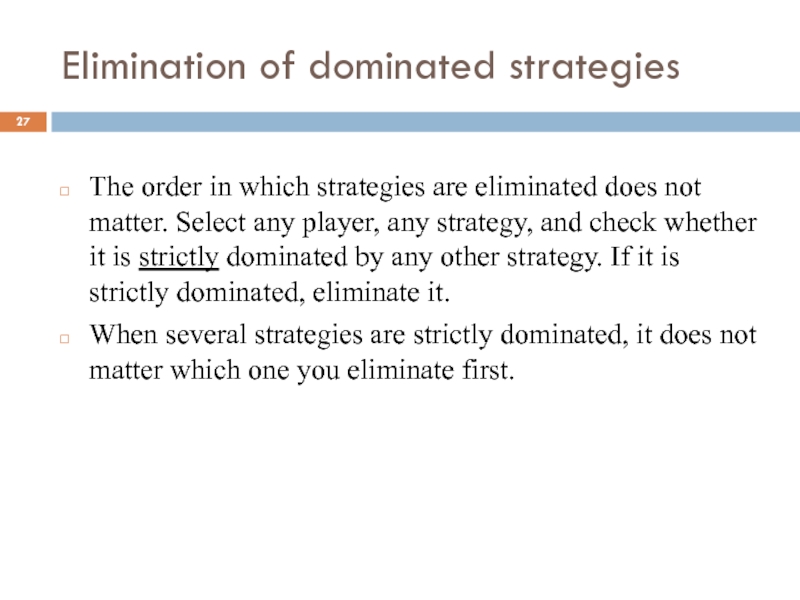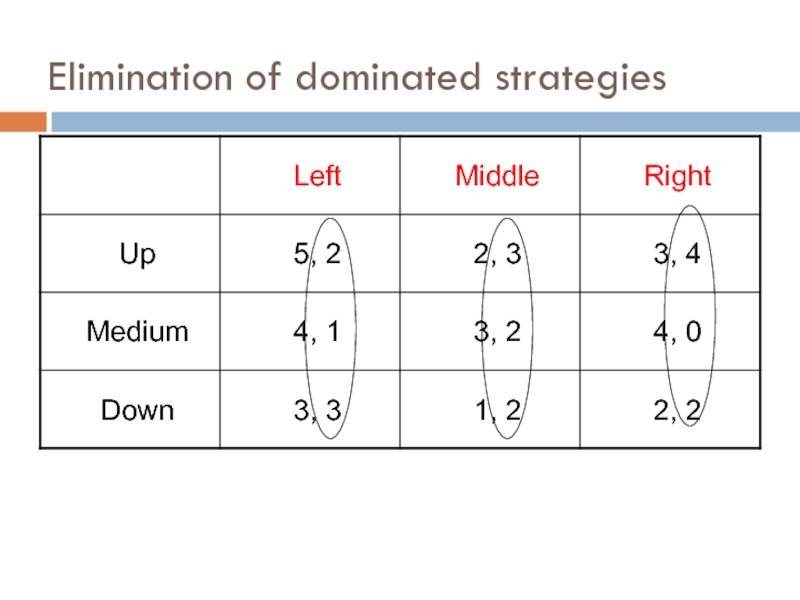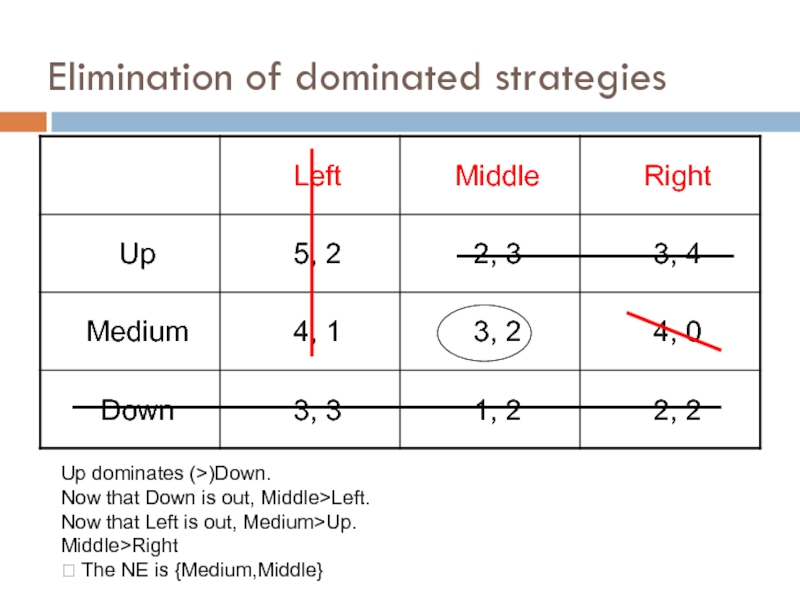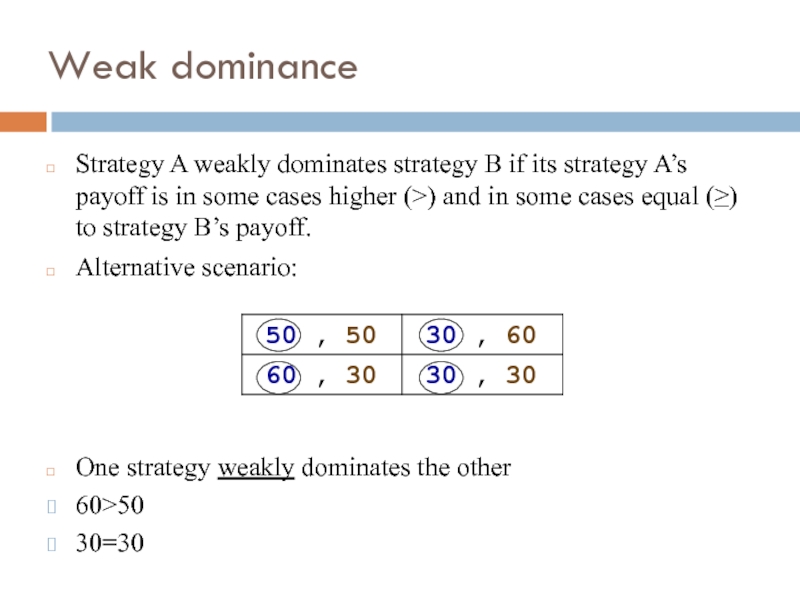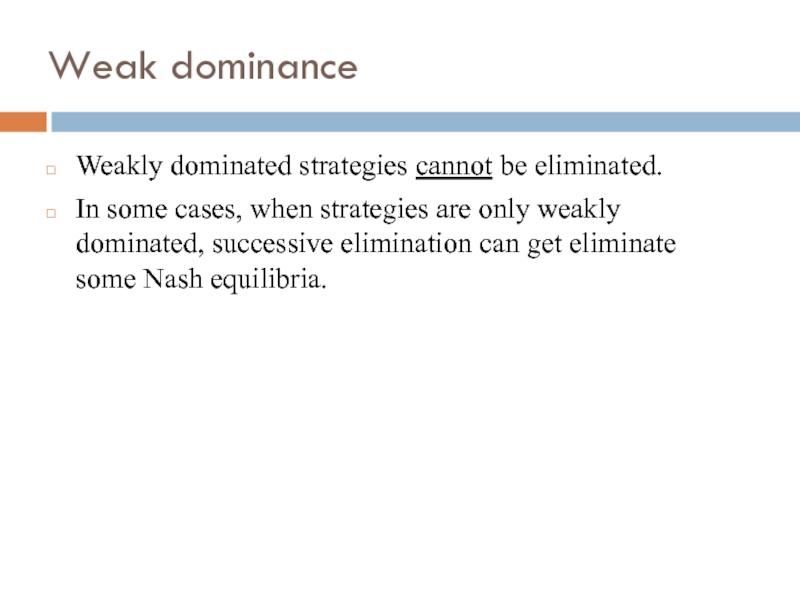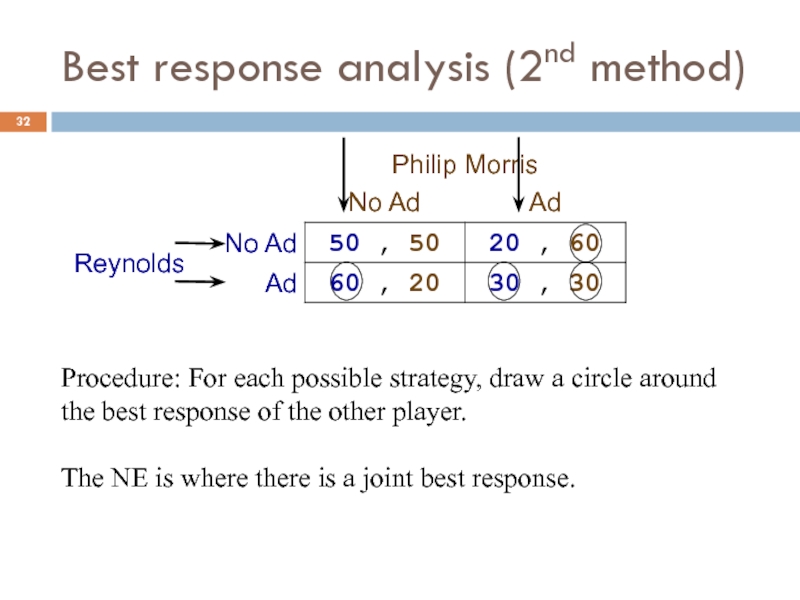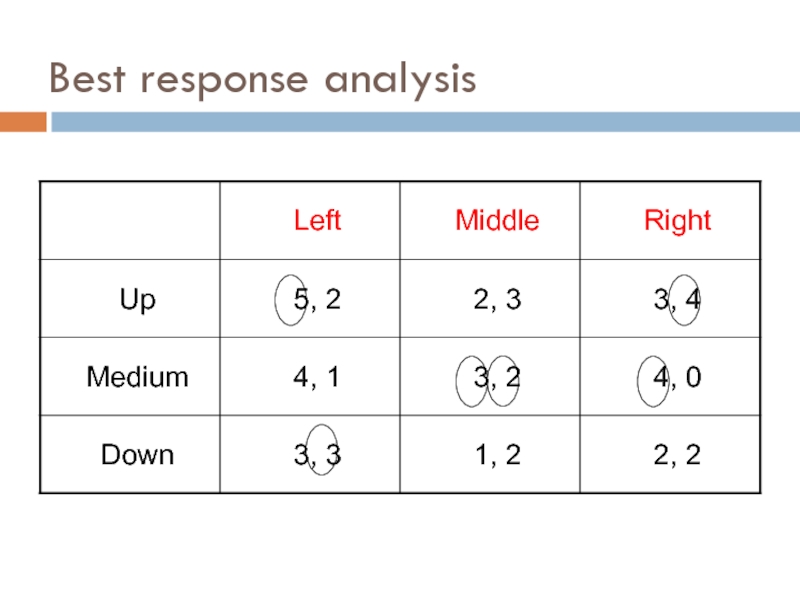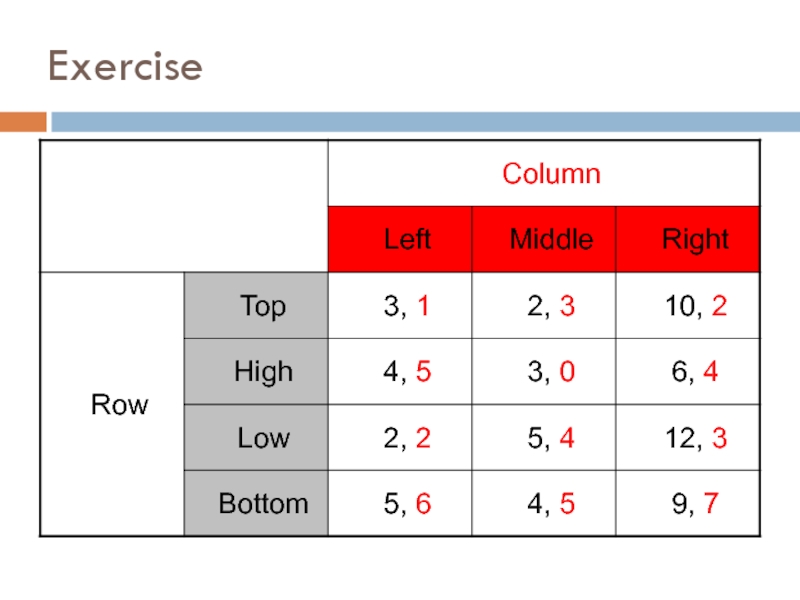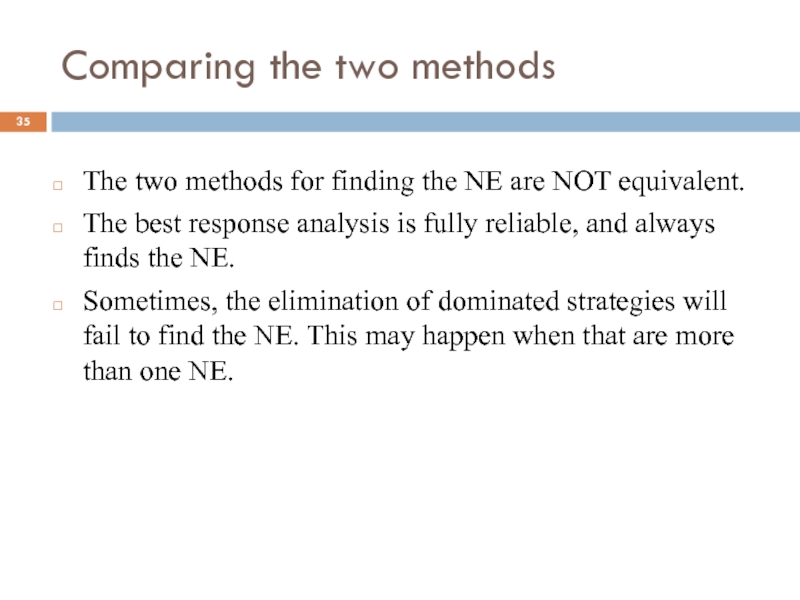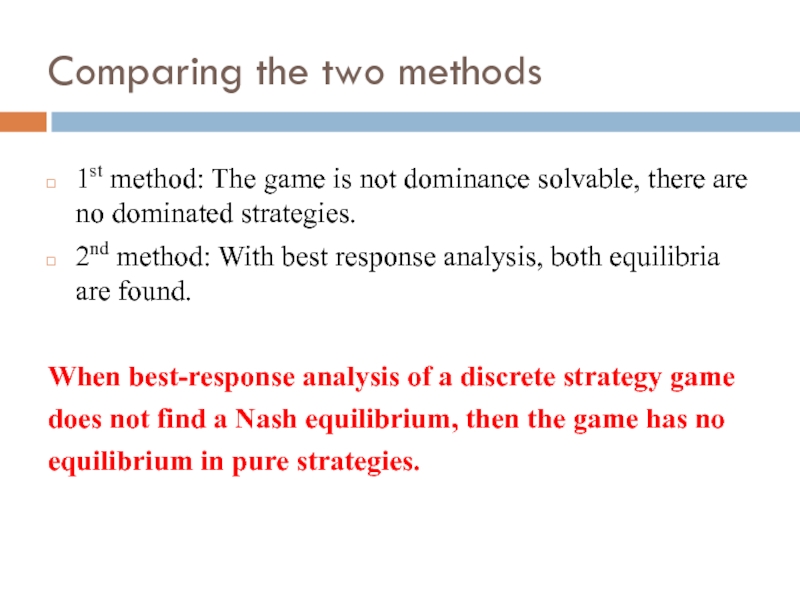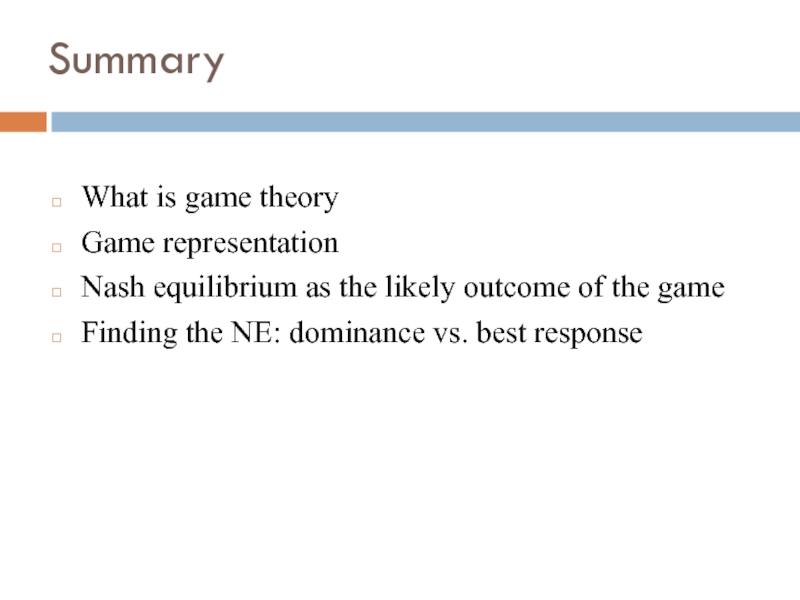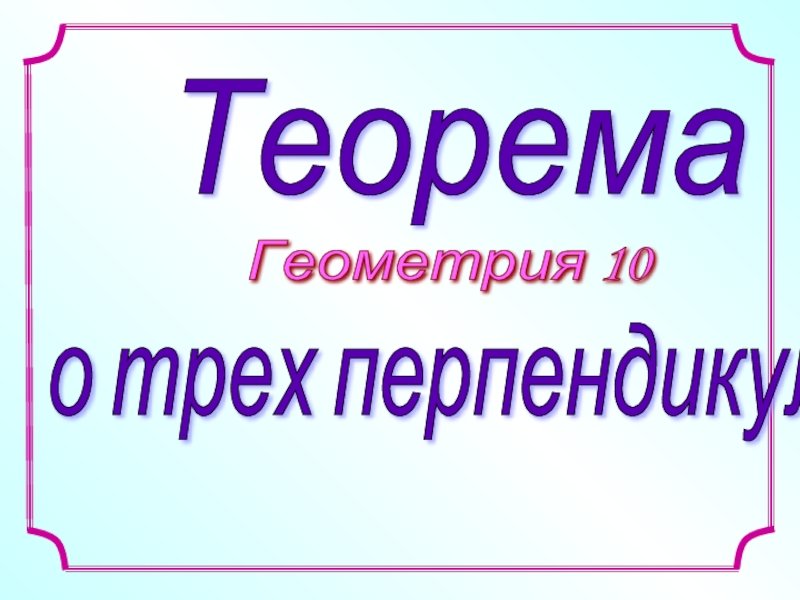- Главная
- Разное
- Дизайн
- Бизнес и предпринимательство
- Аналитика
- Образование
- Развлечения
- Красота и здоровье
- Финансы
- Государство
- Путешествия
- Спорт
- Недвижимость
- Армия
- Графика
- Культурология
- Еда и кулинария
- Лингвистика
- Английский язык
- Астрономия
- Алгебра
- Биология
- География
- Детские презентации
- Информатика
- История
- Литература
- Маркетинг
- Математика
- Медицина
- Менеджмент
- Музыка
- МХК
- Немецкий язык
- ОБЖ
- Обществознание
- Окружающий мир
- Педагогика
- Русский язык
- Технология
- Физика
- Философия
- Химия
- Шаблоны, картинки для презентаций
- Экология
- Экономика
- Юриспруденция
Economics of pricing and decision making. (Lecture 1) презентация
Содержание
- 1. Economics of pricing and decision making. (Lecture 1)
- 2. What makes a business successful? Providing a
- 3. What is game theory? ...a collection of
- 4. What is game theory? Study of interactions
- 5. The Game: Strategic Environment Players Everyone
- 6. Strategic Thinking Example: Apple vs. Samsung Apple’s
- 7. The Assumptions Rationality Players aim to maximize
- 8. History of game theory 1928, 1944: John
- 9. Lectures 1-3: Simultaneous games Nash equilibrium Oligopoly
- 10. Lectures 7: Evolutionary games How do players
- 11. Assessment Assessment consist is a final exam:
- 12. SIMULTANEOUS GAMES WITH DISCRETE CHOICES PURE STRATEGY NASH EQUILIBRIUM
- 13. Simultaneous games with discrete choices A game
- 14. Strategic Interaction Players: Reynolds and Philip Morris Payoffs: Companies’
- 15. Representing a Game (strategic form /
- 16. Solving the game: Nash equilibrium The
- 17. Solving the Game Can (No Ad,No Ad)
- 18. Solving the Game Can (Ad,Ad) be a
- 19. Equilibrium vs. optimal outcome The optimal outcome
- 20. Game of cooperation (prisoner’s dilemma) Players can
- 21. Nash equilibrium existence Q: Does a NE
- 22. Nash equilibrium A formal definition Any social
- 23. Nash equilibrium A formal definition Definition: A
- 24. How to find the Nash equilibrium? There
- 25. Elimination of dominated strategies (1st method) Procedure:
- 26. Elimination of dominated strategies
- 27. Elimination of dominated strategies The order in
- 28. Elimination of dominated strategies
- 29. Elimination of dominated strategies Up dominates
- 30. Weak dominance Strategy A weakly dominates strategy
- 31. Weak dominance Weakly dominated strategies cannot be
- 32. Best response analysis (2nd method) Procedure: For
- 33. Best response analysis
- 34. Exercise
- 35. Comparing the two methods The two methods
- 36. Comparing the two methods Example of
- 37. Comparing the two methods 1st method: The
- 38. Summary What is game theory Game representation
Слайд 2What makes a business successful?
Providing a service that customers like
Building partnerships
Being
Building brand value
...“Interactions”
with customers, suppliers, competitors, regulators, people within
the firm...
Слайд 3What is game theory?
...a collection of tools for predicting outcomes of
... a bag of analytical tools designed to help us understand the phenomena that we observe when decision makers interact (Osborne and Rubinstein)
...the study of mathematical models of conflict and cooperation between intelligent rational decision makers (Myerson)
Слайд 4What is game theory?
Study of interactions between parties (e.g. individuals, firms)
Helps
Game theory consists of a series of models, often technical as well as intuitive
The models predict how parties are likely to behave in certain situations
Слайд 5The Game:
Strategic Environment
Players
Everyone who has an effect on your earnings
Actions:
Choices available to the players
Strategies
Define a plan of action for every contingency
Payoffs
Numbers associated with each outcome
Reflect the interests of the players
Слайд 6Strategic Thinking
Example: Apple vs. Samsung
Apple’s action depends on how Apple predicts
Apple’s action depends on how Apple predicts how Samsung predicts the Apple’s action.
Apple’s action depends on how Apple predicts how Samsung predicts how Apple predicts the Samsung’s action.
etc…
Слайд 7The Assumptions
Rationality
Players aim to maximize their payoffs, and are self-interested.
Players are
Players consider the responses/reactions of other players
Common Knowledge
Each player knows the rules of the game
Each player knows that each player knows the rules
Each player knows that each player knows that each player knows the rules
Each player knows that each player knows that each player knows that each player knows the rules
Each player knows that each player knows that each player knows that each player knows that each player knows the rules
...
Слайд 8History of game theory
1928, 1944: John von Neumann
1950: John Nash
1960s: Game
1970s: Oligopoly theory
1980s: Game theory used
Evolutionary biology
Political science
More recent applications: Philosophy, computer science
1994, 2005, 2007, 2012: Economics Nobel prize
Слайд 9Lectures
1-3: Simultaneous games
Nash equilibrium
Oligopoly
Mixed strategies
4-5: Sequential games
Subgame perfect equilibrium
Bargaining
6: Repeated games
Two
Слайд 10Lectures
7: Evolutionary games
How do players “learn” to play the Nash equilibrium
8-9:
Cooperation and coordination with incomplete information
Signaling, and moral hazard.
10: Auctions
Strategies for bidders and sellers
Слайд 11Assessment
Assessment consist is a final exam:
100% exam
2-hour
Section A: 5 compulsory questions,
Section B: choose 1 essay question from a list of 2. (50 marks)
Слайд 13Simultaneous games with discrete choices
A game is simultaneous when players
choose their
or, choose their actions in isolation, without knowing what the other players do
Discrete choices: the set of possible actions is finite
e.g. {yes,no}; {a,b,c}.
Opposite of continuous choices: e.g. choose any number between 0 and 1.
Слайд 14Strategic Interaction
Players: Reynolds and Philip Morris
Payoffs: Companies’ profits
Strategies: Advertise or Not Advertise
Strategic Landscape:
Each firm
Advertising costs a firm $20 million
Advertising captures $30 million from competitor
Simultaneous game with discrete choices
Слайд 15Representing a Game
(strategic form / normal form)
What is the likely
We want a “stable”, “rational” outcome.
50-20+30-30
50-20+30
50-30
Слайд 16Solving the game:
Nash equilibrium
The Nash equilibrium, is a set of
The NE describes a stable situation.
Nash equilibrium: likely outcome of the game when players are rational
Each player is playing his/her best strategy given the strategy choices of all other players
No player has an incentive to change his or her action unilaterally
Слайд 17Solving the Game
Can (No Ad,No Ad) be a Nash equilibrium?
No, 60>50
Can
No: 30>20
Can (Ad,No Ad) be a Nash equilibrium?
No: 30>20
Слайд 18Solving the Game
Can (Ad,Ad) be a Nash equilibrium?
YES: 30>20
If Philip Morris
If Reynolds “believes” that Philip Morris will choose Ad, it will also choose Ad.
(Ad, Ad) is a “stable” outcome, neither player will want to change action unilaterally.
Equilibrium
Слайд 19Equilibrium vs. optimal outcome
The optimal outcome is the one that maximizes
The NE does not necessarily maximize total payoff. (Ad,Ad). The NE is individually rational, but not always collectively rational.
Equilibrium
“Optimal”
Слайд 20Game of cooperation (prisoner’s dilemma)
Players can choose between cooperate and defect.
that both players defect. But the optimal outcome is that both
cooperate.
In this example: Cooperate = No Ad ; Defect = Ad
Слайд 21Nash equilibrium existence
Q: Does a NE always exist?
A: Yes (in almost
Theorem (Nash, 1950)
“There exists at least one Nash equilibrium in any finite games in which the numbers of players and strategies are both finite.”
Слайд 22Nash equilibrium
A formal definition
Any social problem can be formalized as a
Players: i=1,2,…,N
i’s Strategy:
i’s Payoff:
Слайд 23Nash equilibrium
A formal definition
Definition: A Nash Equilibrium is a profile of
If all players play according to the NE, no player has any incentive to change his action unilaterally.
Why is the NE the most likely outcome:
Any other outcome is not “stable”.
In the long term, players learn how to play and always select the NE
Слайд 24How to find the Nash equilibrium?
There are two techniques to find
Successive elimination of dominated strategies
Best response analysis
Слайд 25Elimination of dominated strategies (1st method)
Procedure: eliminate, one by one, the
Consider two strategies, A and B. Strategy A strictly dominates Strategy B if the payoff of Strategy A is strictly higher than the payoff of Strategy B no matter what opposing players do.
For Philip Morris, Ad dominates No Ad: π(Ad,any)> π(No Ad,any). For Reynolds Ad also dominates No Ad.
Strictly dominated strategies can be eliminated, they would not be chosen by rational players.
? No Ad can be eliminated for both players.
Слайд 27Elimination of dominated strategies
The order in which strategies are eliminated does
When several strategies are strictly dominated, it does not matter which one you eliminate first.
Слайд 29Elimination of dominated strategies
Up dominates (>)Down.
Now that Down is out, Middle>Left.
Now
Middle>Right
? The NE is {Medium,Middle}
Слайд 30Weak dominance
Strategy A weakly dominates strategy B if its strategy A’s
Alternative scenario:
One strategy weakly dominates the other
60>50
30=30
Слайд 31Weak dominance
Weakly dominated strategies cannot be eliminated.
In some cases, when strategies
Слайд 32Best response analysis (2nd method)
Procedure: For each possible strategy, draw a
The NE is where there is a joint best response.
Слайд 35Comparing the two methods
The two methods for finding the NE are
The best response analysis is fully reliable, and always finds the NE.
Sometimes, the elimination of dominated strategies will fail to find the NE. This may happen when that are more than one NE.
Слайд 36Comparing the two methods
Example of an entry game:
Two businesses must choose
This is a game of coordination (not cooperation!): class of games with multiple NE (two in this case).
Слайд 37Comparing the two methods
1st method: The game is not dominance solvable,
2nd method: With best response analysis, both equilibria are found.
When best-response analysis of a discrete strategy game
does not find a Nash equilibrium, then the game has no
equilibrium in pure strategies.
Слайд 38Summary
What is game theory
Game representation
Nash equilibrium as the likely outcome of
Finding the NE: dominance vs. best response

